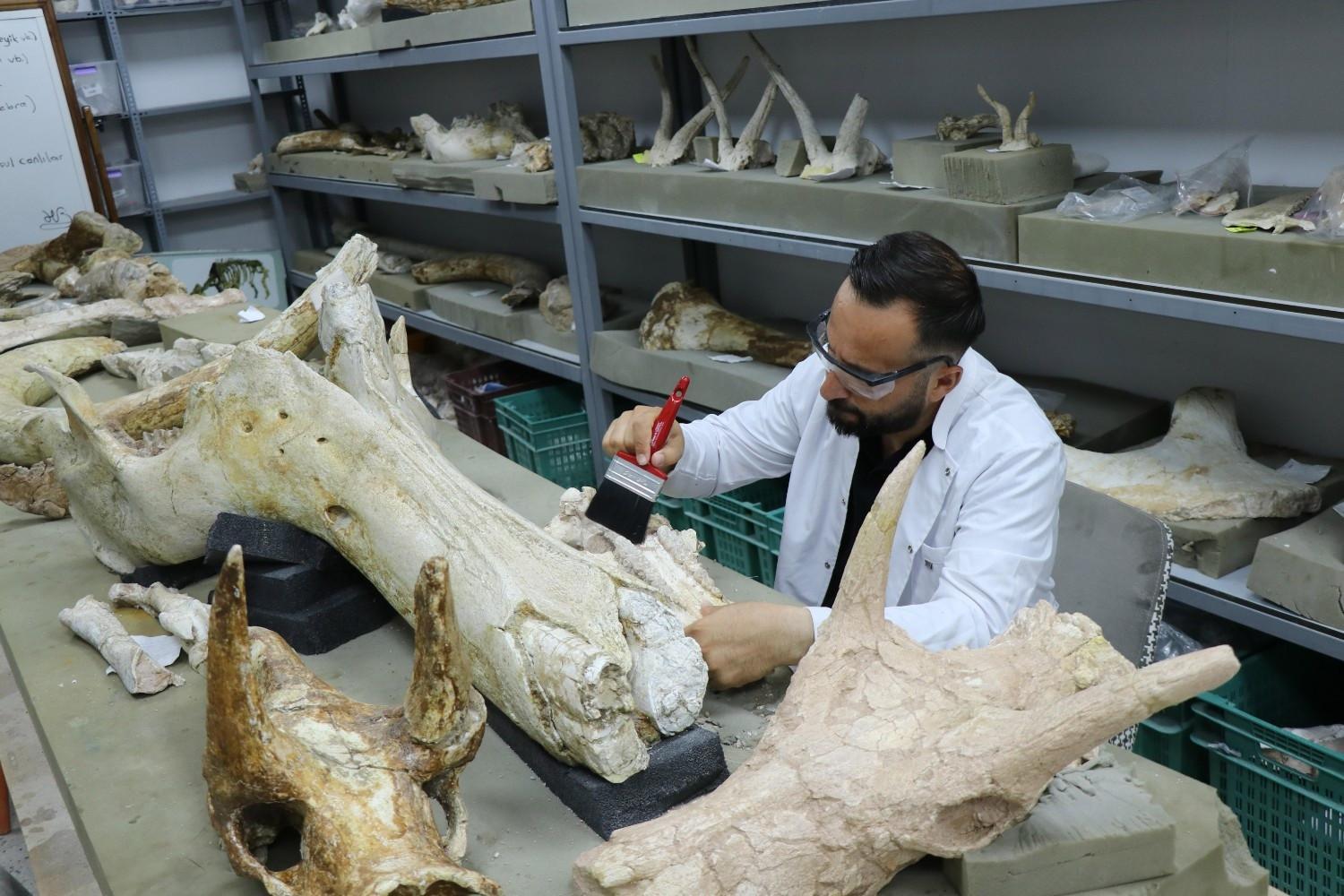
Excavations near Yamula Dam in the central province of Kayseri have uncovered three elephant skulls estimated to be 7.7 million years old.
The digs began after a shepherd reported fossil finds in 2017, leading to systematic excavations launched a year later around the dam built on the Kızılırmak River. The work is carried out with the permission of the Culture and Tourism Ministry, under the supervision of the Kayseri Museum Directorate, sponsored by the Kayseri Metropolitan Municipality and with scientific guidance from professors Okşan Başoğlu and Pınar Gözlük Kırmızıoğlu.
So far, fossils of giraffes, elephants, mammoths, rhinoceroses, three-toed horses, bovids such as sheep, goats and antelopes, as well as turtles and pigs have been found, making the area notable for its diversity.
Archaeologist Ömer Dağ, part of the excavation team, said this year’s season yielded an unusual concentration of elephant remains. “We can call this the year of elephants. Since 2018 we had only found two skulls, but this year alone we discovered three. One even had its lower jaw preserved. Although the tusks were not in perfect condition, all three skulls were nearly complete,” he said.
Dağ explained that radiometric dating placed the Çevril and Taşhan sites at 7.7 million years and the Hırka site at 7.5 million years. “The elephant fossils came from Çevril, which we now call the ‘elephant zone’ because of the concentration there. The finds were spread over distances of 100 to 300 meters. This season was especially rich in elephants,” he added.
Giant fossils draw global attention
Dağ noted that the site is remarkable for its megafauna and that the preservation and size of the fossils have drawn international scientific interest. He said the finds also shed light on the region’s paleogeography. “Some species lived in swampy areas, using their jaws to dig for food, while others fed on trees, even toppling them to eat fresh shoots. The distribution of fossils reflects the ecological diversity of that ancient landscape,” he explained.
In addition to elephant remains, the team also uncovered fossils of three-toed horses, rhinoceroses and a saber-toothed cat belonging to the Carnivora group.